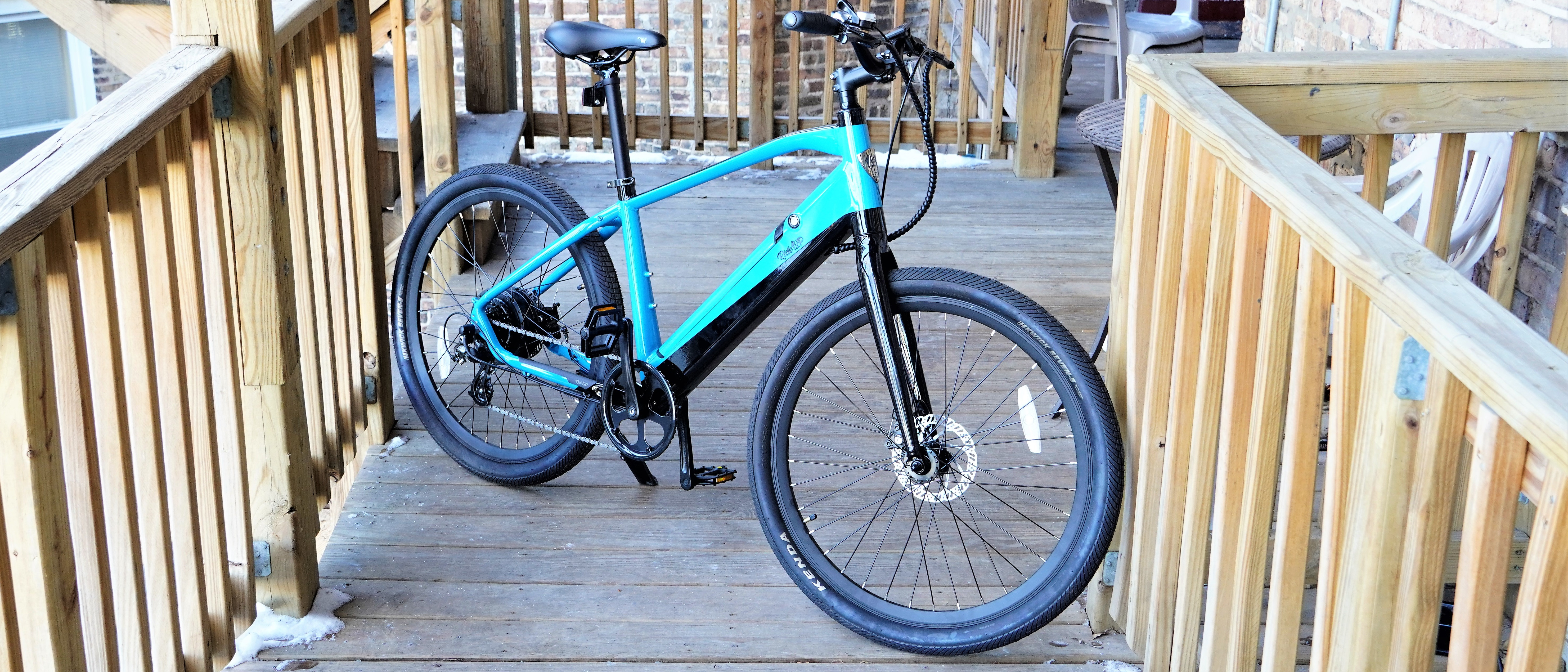TechRadar Verdict
The e-bike market is booming, and Ride1Up’s Core-5 shows just how well they can be made for about $1,000. It’s fast, smooth, and versatile in ways similarly priced competitors aren’t, though that’s not to say it’s flawless.
Pros
- +
Serious value
- +
As fast as is legal
- +
Flexible use
- +
Comfy ride
Cons
- -
Involved setup
- -
Very heavy
- -
Slow without power
Why you can trust TechRadar
Two-minute review
The Ride1Up Core-5 is an enticing entry point into the e-bike market, largely undercutting the price of the best electric bikes. The company has been designing bikes that have a lot of appeal both in terms of looks and when considering all the hardware that’s on offer. The Ride1Up Core-5 is a great example of that.
The bike delivers a 500W rear-hub motor where many of its similarly priced competitors would likely have stuck to a 250-350W option. It goes for disc brakes where some cheaper models stick with the most basic rim brakes. It offers both pedal assist and throttle control for flexibility, and it’s even boasting a seven-speed drive train to make unpowered riding easier and powered riding more comfortable with more options for controlling cadence.
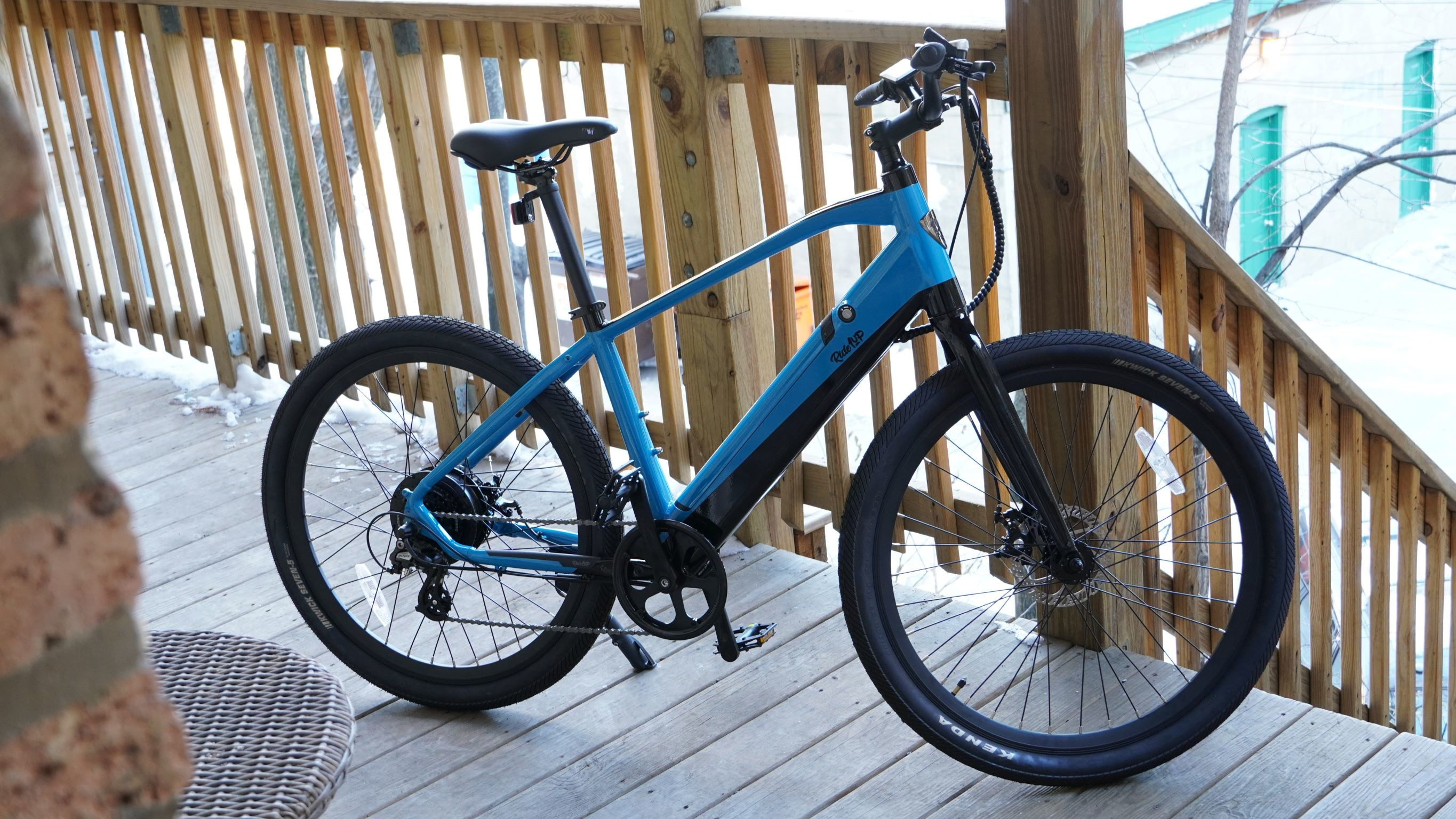
It’s all packed into a bike that can ride on city streets and trails alike. The ergonomics are decent, with an especially comfy seat for leisurely riding. And there are mounting points for water bottles and a rear rack, giving the option to gear the bike up for longer hauls. While it’s cruising at up to a top speed of 28mph, the Ride1Up Core-5 also flies under the radar with a stealthily integrated battery that slots into the downtube.
The range of the Ride1Up Core-5 is rated at 20-40 miles, and we see it living up to that claim, even when we’re asking it to do a lot of the work for us. One of the benefits of an easily detachable battery is that those who want to go for extra-long trips can just pick up extra batteries, like Ride1Up’s beefier option, though they add a lot more to the total price.
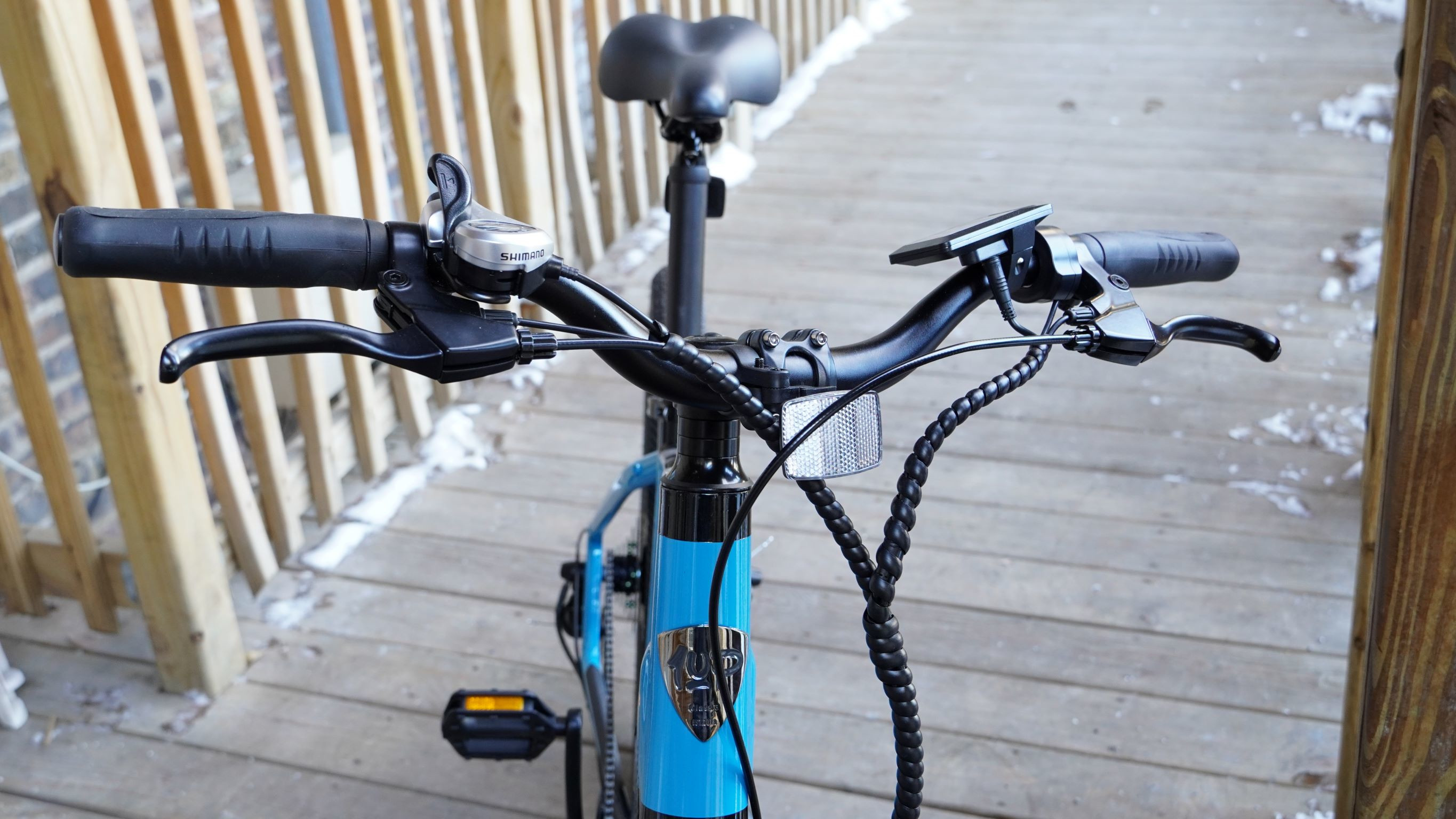
The bike isn’t perfect. It’s quite heavy, and that makes it less ideal for anyone who lives up a few flights of stairs, and it’s especially rough to ride if the battery dies. Some of the parts are also on the cheaper end, like the shifter and rather basic (though still effective) disc brakes. A bike like the BlueJay Sport shows how much room there is for improvement, but Ride1Up manages an enjoyable and high-utility ride for a quarter of the price. Perhaps the most compelling alternative is Ride1Up’s own Roadster v2, which is geared up more for the urban cyclist.
Price and release date
The Ride1Up Core-5 was introduced in the first half of 2020, and it runs $1,045 (about £780 / AU$1,500) for both frame types. That makes it one of the most affordable e-bikes we've tested to date; for comparison, our current top-rated model, the Specialized Turbo Vado 4.0 (2020) will set you back $4,000 / £3,900 / AU$5,000.
Design
The Ride1Up Core-5 is a thick bike, blurring the lines a bit between a cross bike and a simpler mountain bike. It’s 2.2-inch wide Kenda Kwick Seven.5 tires certainly give it that feel of an off-road-ready bike while it’s aerodynamic fork and simpler, shock-less geometry feel more meant for the road.
Sign up for breaking news, reviews, opinion, top tech deals, and more.

Ride1Up manages a pretty slick package for an e-bike that boasts a nearly 500Wh battery. It uses a Reention Eel case to hide the battery away into the down tube, where it locks into place with a key. Ride1Up sells a step-through model that omits the top tube, but the Core-5 XR model’s top tube angles down fairly aggressively providing decent standover clearance. As slick as it is, it’s still a bit of a tank, and weighs in at 52lb (about 23.5kg) without us attaching any racks or fenders. That weight does include a kickstand that does a decent job holding it all upright.
We can forgive some of the weight, as the Ride1Up Core-5’s battery was never going to be light unless it offered less range. We also wouldn’t want to miss out on the 500W Shengyi rear hub motor that boosts the bike along at up to 28mph. The bike offers both a thumb throttle that can speed the bike up to 20mph, or it can use a cadence sensor to provide pedal assist for its max speeds. Ride1Up has included a cheap, but effective, Shimano Altus rear derailleur and a seven speed cassette, though the shifter included feels especially cheap for a bike of this price.
Basic mechanical disc brakes handle stopping, though they’re the same single-piston style we’ve seen on a number of bikes — they’re effective but exceedingly fussy in getting set up without any scraping or too much play in the brake lever.
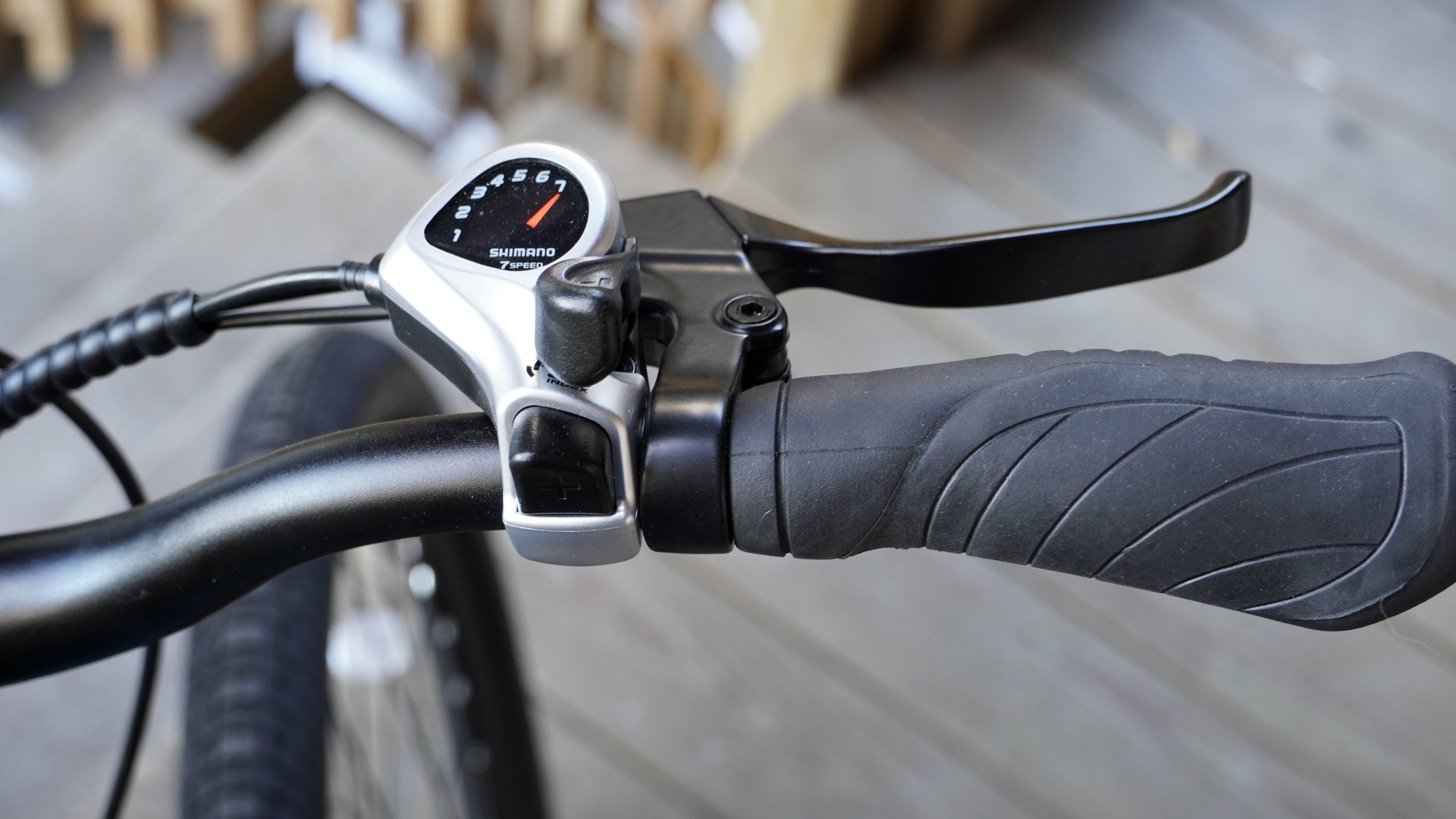
Ride1Up has gone for a cushy seat that’s easy on the sit bones over longer rides and has a good range of height adjustments, and it has ergo handlebar grips. The handlebar isn’t too hard to change the angle on, but the stem itself only offers height adjustments. The system also uses a large LCD screen for controlling the bike and viewing battery life, speed, and distance covered.
With all the brakes, gears, and electronics, it’s impressive how well Ride1Up bundled up the wiring and hid a lot of it away with internal routing through the down tube.
Here we should note that the Ride1Up Core-5 is a direct-to-consumer product, and it entails a good deal of assembly. The frame, chain, derailleur, and rear wheel all came assembled. But the fork, front wheel, seat, cranks, pedals, and handlebar all need to be attached. It’s not a harrowing task, but may be a bit more than novice riders have bargained for, especially since the instructions aren’t entirely complete. Even though the Ride1Up Core-5 has a compelling price, you may want to factor in the additional cost of setup at a bike shop.
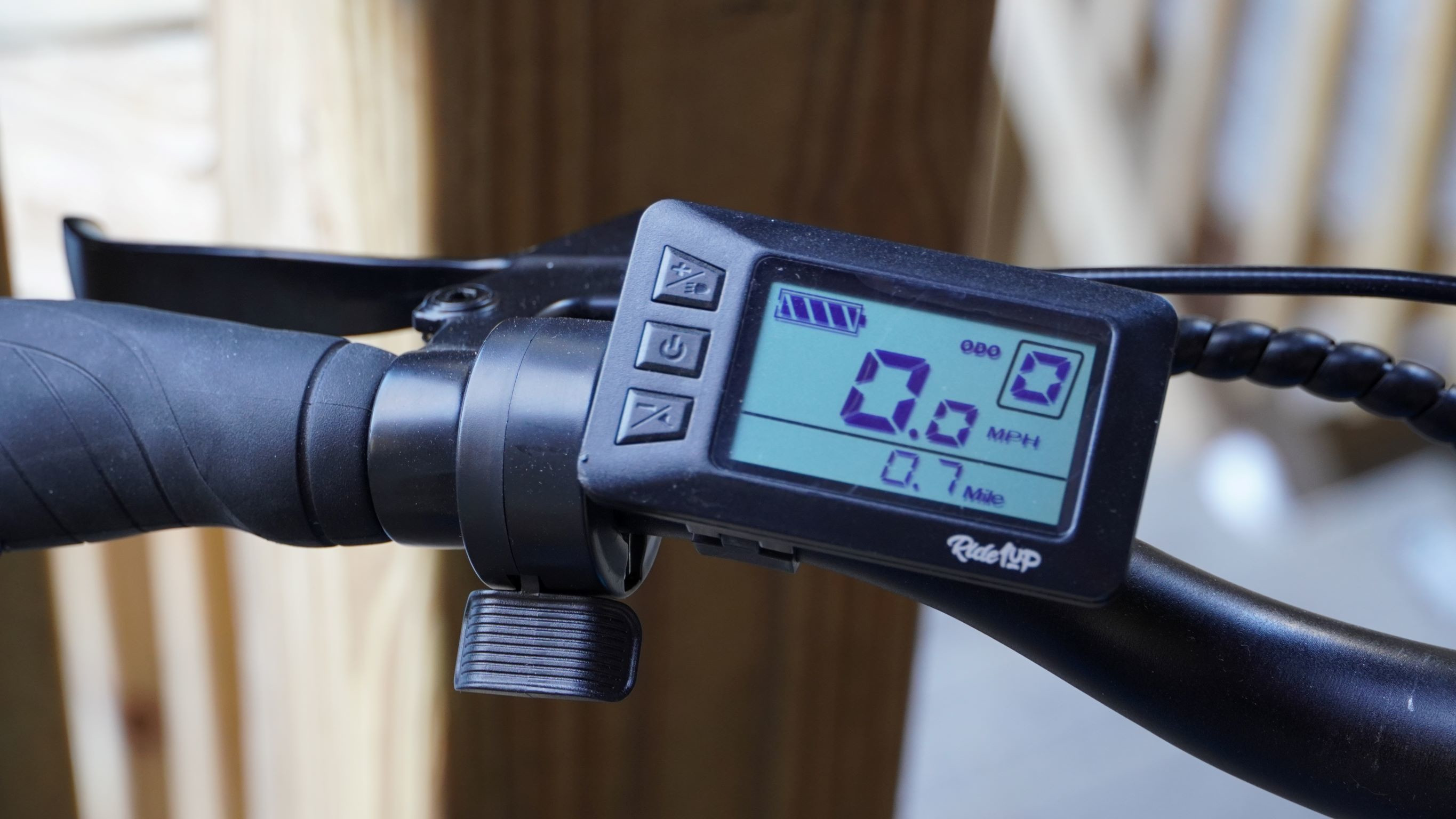
Performance
The Ride1Up Core-5 is a comfortable ride, in part because of the ergonomics on offer combined with the aluminum frame and thick tires and in part because of all the power at hand. It’s easy to just sit back, hit the throttle, and get cruising along at 20mph without so much as putting our feet on the pedals. The 500W motor doesn’t struggle to accelerate even with a 225lb rider packing on an extra bag. It’s not chaotically powerful, and we never feel under threat of being thrown by the motor, but it doesn’t crawl out of a standstill either.
Still, the bike is better enjoyed pedalling. It has a decent gear range to get up from a stand still easily even without the motor helping, but it’ll zip out of intersections with our strength combined with the motor. It’s especially pleasing to push the bike up to its top 28mph, which does require a bit of effort pedalling to reach. We don’t feel like we’re giving it our all in a mad dash to maintain those speeds either, though it’s still more work than we experienced using the Bluejay Sport’s mid-drive motor, but that bike costs almost four times more. It also steps ahead of the similarly priced Propella e-bike.
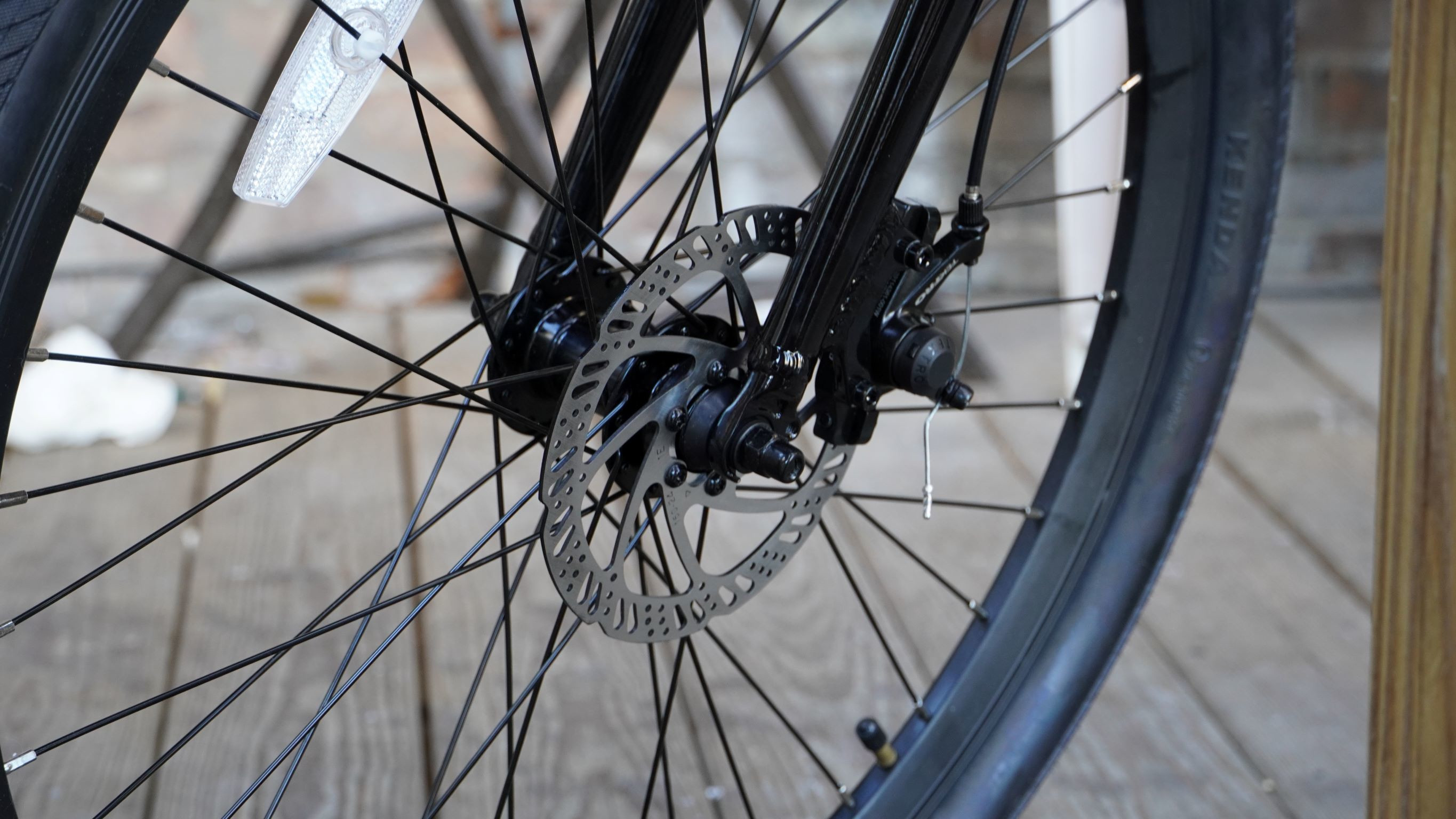
The Ride1Up Core-5 handles bumpy roads well. The tires absorb a lot of the rougher patches while the frame, handlebars, and seat cushion all help minimize the vibrations that reach us. We’re comfortable taking this bike over speed bumps we normally approach with more care on a road bike sporting 700x28c or even thinner tires.
As easy as it is to get up and go on the bike, it’s just as easy to stop. The disc brakes readily bring us to a halt from 15-20mph in a single car length, though this maneuver can see the tires skid a bit.
We managed to get 19.9 miles of range out of the battery in less than favorable conditions. Cold weather saps longevity out of batteries, and we rode it in some near-freezing temperatures. We also spent a lot of time hitting that throttle or using the maximum assist to fly at 28mph. Ride1Up advertises 20-40 miles of range, and our experience lines up with that.
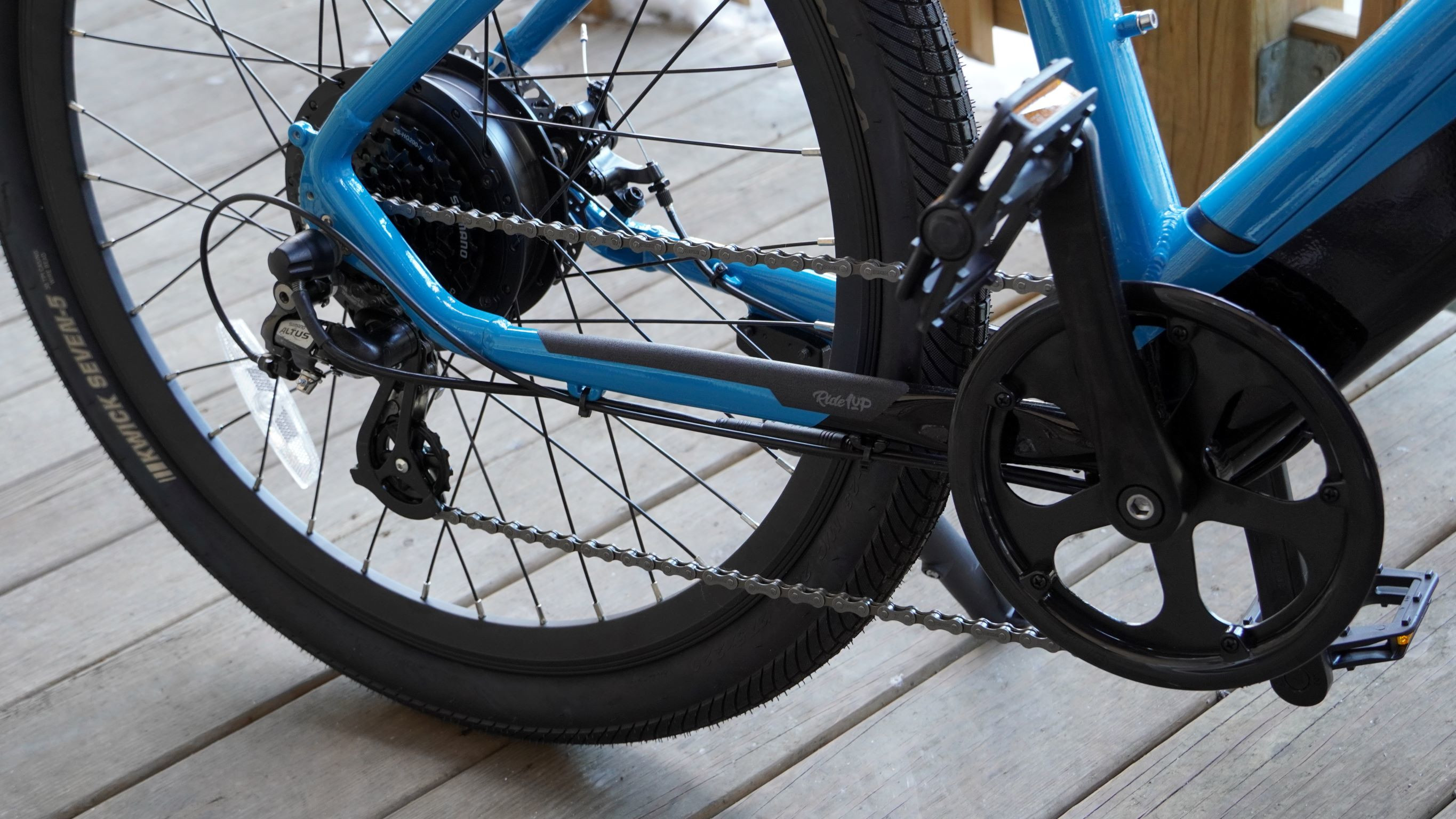
The battery can charge on or off the bike, but it’ll take a while to top up. The included charging brick should be able to fill the battery in about five hours.
When the battery is dead, it’s not so fun to ride the Ride1Up Core-5. Its gears help make it more manageable, but its heavy weight is something we’re constantly fighting against. And though some may say that an e-bike that’s turned off rides just like a normal bike, we still find there seems to be some added resistance that really forces us to work extra hard just to maintain speeds over 10mph.
First reviewed February 2022
Buy it if
You like speed
The 28mph top speed of the Ride1Up Core-5 is easy to achieve and maintain. If you’ve got a lot of distance to cover and want to do it fast, the Core-5 is ready to help.
You want a versatile ride
The Ride1Up Core-5 is ready to cruise around town, take a spin along trails, and haul some cargo if you add a rack. And it can do it all with pedal assist or simply relying on the throttle.
Your budget is capped
There are definitely better bikes out there, but there are few that can offer as compelling a ride and build as the Core-5 for just about $1,000.
Don't buy it if
You can’t handle heavy
The Core-5 weighs over 50lb, and it’s not easy to carry (no thanks to the top tube angle). If you don’t have a garage or lower-floor apartment to store it in, you might start to regret it.
You won’t keep it charged up
The Core-5 is good when it’s got a healthy, topped up battery inside, but it’s a gruelling ride when the battery is dead. There’s not much sense in riding an electric bike without power, but it’s doubly bad when they’re this heavy.
You want the slickest ride on the streets
The Ride1Up Core-5 puts on a good show, but there are classier rides with higher-end components if your budget allows. The Core-5 is more suited for utilitarian riders.

Over the last several years, Mark has been tasked as a writer, an editor, and a manager, interacting with published content from all angles. He is intimately familiar with the editorial process from the inception of an article idea, through the iterative process, past publishing, and down the road into performance analysis.
